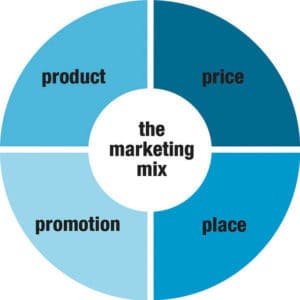We see almost all small business owners constantly struggling with their marketing strategy and planning. Whether you’re only starting with marketing – or you expect more results from your current strategy – we’ve got you covered. Starting a basic marketing plan is actually very easy. Of course, only when you know what to do. Our team has been helping small and mid-sized companies make their marketing perform over 15 years. So look no further – here’s our best tips to get your business growing in 2020.
Marketigation hosted a marketing strategy workshop a few weeks ago in Townsville, QLD. A big thanks to all eager business owners who joined us to create a marketing plan for their business. Before going to the main takeaways from the marketing strategy workshop, we’d like to announce our next workshop. Our next workshop will cover how to create a highly performing website. And it will take place on Wednesday, November 27, 2019 at 5:30 pm. Don’t forget to register via Digital Marketing and Business NQ meet-up group.
Formulate your mission, vision and business & marketing plan
When starting a new business one of the first things you’ll probably do is to come up with a mission, vision and a business plan. Sometimes a mission, a vision and your plan are very clear in your mind. However, it’s very important to write them down. That enforces you to really think it through and shape a winner plan for your business. Mission and vision might sound a bit theoretical, but they are crucial to shape a successful marketing plan.
What’s a mission statement?
A mission statement is a sentence that states your business goals and philosophies. It should define what your organisation is, why it exists or what is the reason for it’s being. Furthermore, your mission should reflect all aspects of your business. These include e.g. products, pricing, quality, service, marketplace position, growth potential and use of technology. Additionally, it would include relationships with your customers, employees, suppliers, competitors and your community.
Check out the 6 ways online marketing helps SMEs grow their business.
What’s a company vision?
A company vision is an image of what you’d like your business to do some time in the future, based on your goals and plans. A vision statement should always be written. Furthermore, it should capture what you’d like your business and staff to achieve long-term in an idealistic world. Your vision will essentially answer the questions “Where is my company going?” and “How will we achieve that?”. Above all, a realistic yet ambitious mission statement inspired by your passion, quality standards and/or growth will most likely be very successful.

When you’ve formulated your vision, it will be your guiding force going forward. Instead of formulating a vision and forgetting it after, familiarise the whole company with it. Furthermore, let your vision guide your daily work and operations. Finally, don’t forget your vision but re-visit it regularly as your company grows.
Is your marketing performing at 100%?
Like to start your marketing plan, but wanna get measurable results even quicker? Call the Marketigation team at 0431 372 622 to schedule your free 60-minute consulting session. Or email us at info@marketigation.com.
How can I create a basic business plan?
A business plan for a small company includes the following components
- business profile
- product (or service) analysis
- marketing plan
- legal (risk management) plan
- operating plan
- Human Resources plan
- finance plan
- action plan
If you don’t already have a basic business plan, it would be highly recommended to give it a bit more thought and write down the key points. Since we are a marketing consulting company, we’ll be mostly concentrating on the marketing plan.
Formulate a mission and a vision statement for your company. If you already have one, re-visit it to ensure it’s up to date. Furthermore, go back to your business plan and make any necessary changes. If you don’t have a business plan yet, give it more thought and start writing down key points in a simple bullet point format.
What’s a marketing mix?
We already briefly touched on product planning as a part of our business plan. It’s crucial for you as a business owner to very clearly understand and define what your product (or service) is. Additionally, it’s crucial to understand how to successfully offer your product to your clients. Only when you understand your product very well you can explain and sell it to your prospective clients. Following the marketing mix ensures you’ll put the right product or service to the right place.
Is your marketing performing at 100%?
Like to start your marketing plan, but wanna get measurable results even quicker? Call the Marketigation team at 0431 372 622 to schedule your free 60-minute consulting session. Or email us at info@marketigation.com.
The marketing mix consists of 4 P’s of marketing
Product as a part of my marketing plan
What is your product or service? What consumer need or demand it solves? Break down your product life cycle and estimate an anticipated time frame for each step. Additionally, think about how you’re planning to address the different product life cycle stages in your business plan. Furthermore, list benefits and features of your product. Finally, determine your potential buyers (target group) and understand them and their buying behaviours really well.
Price as a part of my marketing plan
Determine your price based on the perceived value of your product to your prospective customer. Thus, try not to price your product too low or too high compared to the perceived value. You’ll also need to calculate how much it costs to produce your product. However, that shouldn’t be the first driver for your price. If you didn’t do the Product part thoroughly enough, you might not understand how your customer sees your product. Therefore, you might have difficulties to price it. Your price directly affects how well your product will sell. However, you’ll also need to consider other factors, e.g. distribution mechanisms and competitor prices.

Promotion as a part of my marketing plan
List all marketing communication strategies that you’re planning to use to promote your product. Such strategies can include, e.g. advertising, promotions (offers) or Public Relations. Elaborate on each strategy and include details, e.g. marketing media, budget and timelines. However, do ensure the communication strategies are suitable for your product, price, and your prospective customer.
Place(ment) as a part of my marketing plan
Think about ways how to provide your product to your future customers. Decide which distribution channel works the best with your overall product strategy. You might want to go with e.g. direct selling, selling through intermediaries or internet. Most importantly, remember to consider an omni-channel distribution strategy.
Formulate your marketing mix by carefully writing down detailed information about your product, price, promotion and placement. Most importantly, give the marketing mix process enough time. When you’re happy with it, gather feedback from your employees, stakeholders & peers. Additionally, perfect your marketing mix until your it ‘s absolutely bullet proof.
Check out the 6 ways online marketing helps SMEs grow their business. Or read 7 performance tips for digital marketing in 2019. Don’t worry – they are all still valid in 2020 too.

